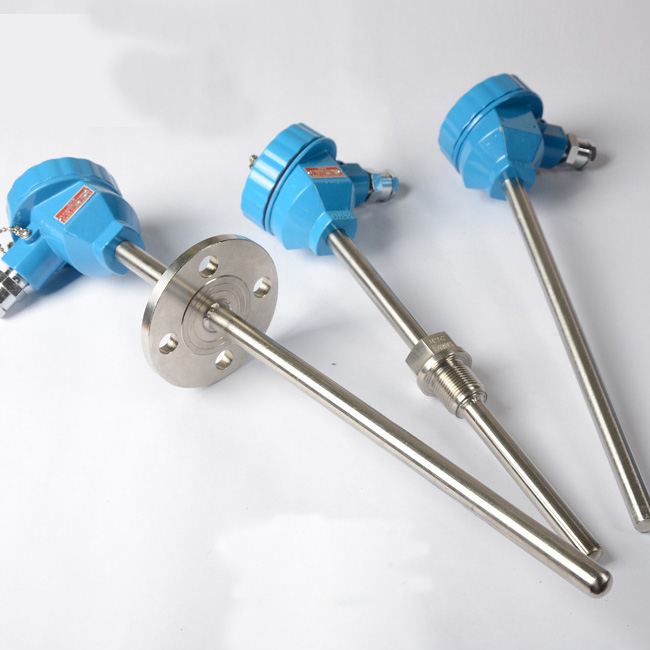
Flameproof Temperature Sensor having a blast evidence RTD sensors are made of the robust pass on the cast aluminum head with mineral protection. They can also be made of solid metal, SS304, and SS316. Our standard RTD sensors are guaranteed flameproof for gas bunches I, IIA and IIB and come complete with a Flameproof head.
Flameproof temperature controller is designed to monitor
& control temperature in hazardous area applications
where precision & safety is paramount.
Flameproof temperature controllers take input from
flameproof RTD Pt-100 sensors & display temperature &
have 2 relays in-built ( 2 Nos. NO/CO/NC).
Sensors can be installed in all parts of an industrial
application. Some applications such as food processing,
mining, spray painting, and chemical processing require
special enclosures or barriers for the sensors to
protect them from explosions and contact with chemicals
and acids. This can be accomplished by making the
enclosure for the sensor so that it prevents the
atmosphere from coming into contact with the sensor. In
this type of application, the sensor is fully enclosed
and sealed so that the explosive gases or chemicals
can't come into contact with the area where the sensor
produces the source of ignition. Another way to enhance
the seal is to pressurize the area inside the enclosure
so that if small leaks do occur, the harmless gas that
is used to pressurize the enclosure will leak out rather
than allowing the explosive gas to leak in.
Another way to provide protection against explosion is
to limit the amount of power the sensor will have. In
order to have an explosion, fuel, oxygen, and a source
of ignition must all be present. Since it can be assumed
that the fuel and oxygen are always present in the area
where explosion-proof sensors are needed, the goal is to
limit the amount of energy available to the sensor or
the part of the circuit that is located in the hazardous
location. One way to limit the power to the area of the
sensor that is in the exposed atmosphere is to use zener
diodes to limit voltage, and resistors to limit the
amount of current . ill. 1 shows the block diagram for
this type of circuit. From the circuit notice that the
zeners are located in the circuit between the power
supply and the sensor so that the voltage to the sensor
is limited. In the circuit in the bottom part of the
diagram notice that the zener-limiting circuit is used
with a signal conditioner which would include the
sensor. Each of these circuits meets ratings limiting
the source of ignition so that these devices can be used
in hazardous locations. These circuits can also be used
with virtually any sensor.

